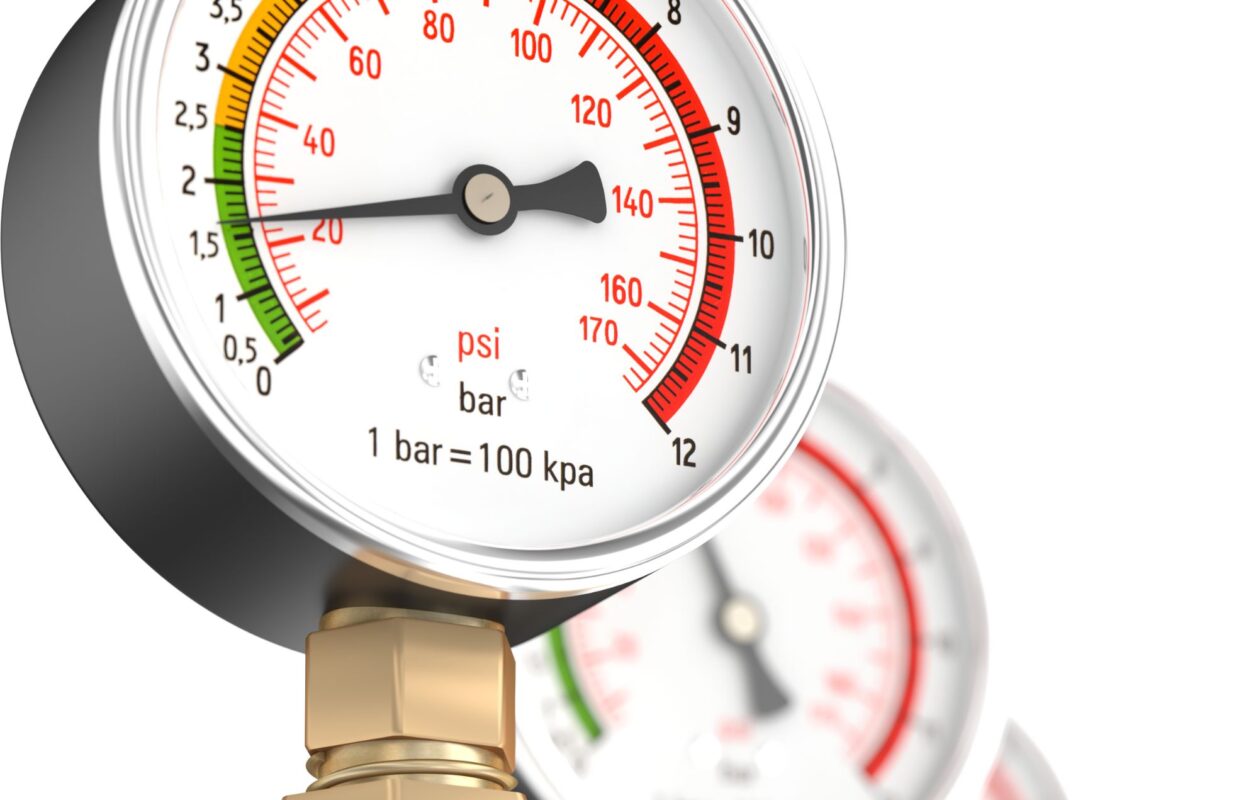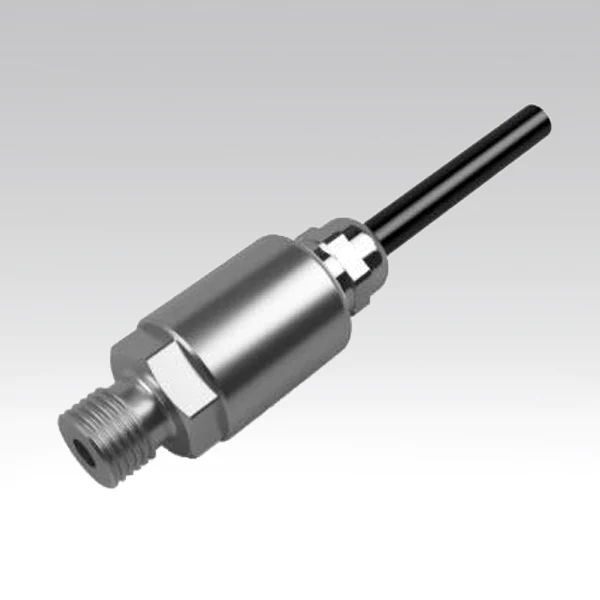What is Pressure Measurement? What Measures Pressure?
What is Pressure Measurement?
Pressure measurement is the process of determining the force per unit area exerted by a fluid or gas. This force is typically referred to as “pressure” and is usually quantified in units like pascals (Pa) or pounds per square inch (psi).
It is a fundamental quantity in physics and engineering and is used in a wide range of applications, from measuring blood pressure to controlling industrial processes.
In this guide, we look at the different types, methods, and applications of pressure measurement.
Why is Measuring Pressure Important?
Pressure measurement devices are essential for maintaining safety, improving efficiency, and ensuring precision across a range of applications, including weather monitoring, industrial automation, medical devices, and various other fields.
They aid in the collection of data concerning fluid pressures in diverse settings, facilitating instantaneous monitoring, control, and in-depth analysis.
Here are some advantages:
- Ensure the safety of people and equipment
Pressure sensors are used to monitor the pressure in boilers and other high-pressure systems to prevent accidents.
- Improve the efficiency of industrial processes
Pressure sensors are used to control the pressure in oil and gas pipelines to optimise flow rates and reduce energy consumption.
- Diagnose medical conditions
Blood pressure measurement is used to diagnose and monitor hypertension, a major risk factor for heart disease and stroke.
Devices that combine pressure measurement and display are known as pressure meters, pressure gauges, or vacuum gauges. Among them, Bourdon gauges, a prevalent mechanical type, both measure and provide a visual pressure indication.
Related: What is a Pressure Sensor?
What are the Different Types of Pressure?
There are four main types of pressure:
- Absolute pressure: Absolute pressure is the total pressure exerted by a fluid or gas, measured relative to a perfect vacuum.
- Gauge pressure: Gauge pressure is the pressure exerted by a fluid or gas relative to atmospheric pressure.
- Differential pressure: Differential pressure is the difference in pressure between two points.
- Sealed pressure or vacuum pressure: Sealed pressure or vacuum pressure is the pressure inside a sealed vessel, relative to atmospheric pressure.
Our team at Process Parameters has extensive knowledge and experience in temperature management and process control.
Browse our pressure sensors, submersible level transmitters and level sensors. If you have any questions, please get in touch.
Pressure & Level Sensors
DMP333 High Range ATEX IECEX Pressure Transmitter 100 bar to 600 bar
Pressure & Level Sensors
DMP331 Low Range Atex IECEX Pressure Transmitter 100 mbar to 60 bar
Types of Pressure Measurement
There are two main types of pressure measurement: direct and indirect.
Direct pressure measurement involves measuring the force exerted by a fluid or gas on a known area. This can be done using a variety of devices, including bourdon tubes, diaphragm gauges, and piston gauges.
Indirect pressure measurement involves measuring a property of the fluid or gas that is related to pressure, such as its density or velocity. This can be done using a variety of devices, including barometers, manometers, and flow metres.
Pressure Measurement Methods
There are three main methods of pressure measurement: mechanical, electrical, and optical.
Mechanical pressure gauges
Mechanical pressure gauges use mechanical components, such as springs and diaphragms, to measure pressure. They are typically less expensive than electrical and optical pressure gauges, but they can be less accurate and less reliable.
Electrical pressure sensors
Electrical pressure sensors use electrical components, such as strain gauges and piezoelectric crystals, to measure pressure. They are more accurate and reliable than mechanical pressure gauges, but they can also be more expensive.
Optical pressure sensors
Optical pressure sensors use light to measure pressure. They are the most accurate and reliable type of pressure sensor, but they are also the most expensive.
Common Applications
- Automotive
In the automotive industry, pressure measurement is essential for monitoring tire pressure, engine performance, and braking systems.
- Aerospace
Aerospace applications require precise pressure measurements to maintain cabin pressure and ensure safe operation of aircraft.
- Industrial
In industrial settings, pressure measurement is crucial for controlling and monitoring processes, ensuring safety, and improving efficiency.
- Medical
Pressure measurement is vital in the healthcare sector for monitoring blood pressure and delivering accurate diagnoses.
- Environmental
Environmental applications involve measuring atmospheric pressure to predict weather changes and study the Earth’s atmosphere.
Summary of What is Pressure Measurement
Pressure measurement is the process of determining the force per unit area exerted by a fluid or gas, typically quantified in units like pascals (Pa) or pounds per square inch (psi).
It’s crucial for safety, efficiency, and precision in various applications, including weather monitoring, industrial automation, and medical devices. It helps prevent accidents, optimise processes, and diagnose medical conditions like hypertension.
Our specialists at Process Parameters can provide advice on a wide range of industries, uses, and capabilities of temperature management. Get in touch for a free quote on our pressure sensors or speak to a member of our team today.
Chat With Our Dedicated TeamPressure & Level Sensors
DMP333 High Range ATEX IECEX Pressure Transmitter 100 bar to 600 bar
Pressure & Level Sensors
DMP331 Low Range Atex IECEX Pressure Transmitter 100 mbar to 60 bar
FAQs
What should I consider when choosing a pressure measurement device?
- Accuracy
- Range
- Resolution
- Operating temperature
- Durability
- Cost
What are some common errors in pressure measurement?
- Zeroing errors: Errors that occur when the device does not read zero when there is no pressure applied.
- Span errors: Errors in the device’s calibration affecting its accuracy over its entire range.
- Hysteresis errors: Differences in measurements when pressure is increased compared to when it’s decreased.
- Temperature errors: Variations in pressure readings due to temperature fluctuations.
- Vibration errors: Errors induced by vibrations that affect the measurement device.
What is a pressure gauge?
A pressure gauge is a mechanical or digital device that measures and displays the force or pressure of a fluid, gas, or substance in a system. It provides a numerical reading or visual indication of the pressure, aiding in monitoring and control.
Other Knowledge Guides:
- What is a Level Sensor?
- How to Measure Pressure
- What is a Bimetallic Thermometer?
- What is a Pressure Sensor?
- What is a Data Logger?
- What Is A Temperature Sensor?
- What is a Thermowell?
- What is a Thermistor?
- What Is An Infrared Thermometer?
- What is a Pyrometer?
- What is a Temperature Transmitter?
- What is an RTD Sensor?





